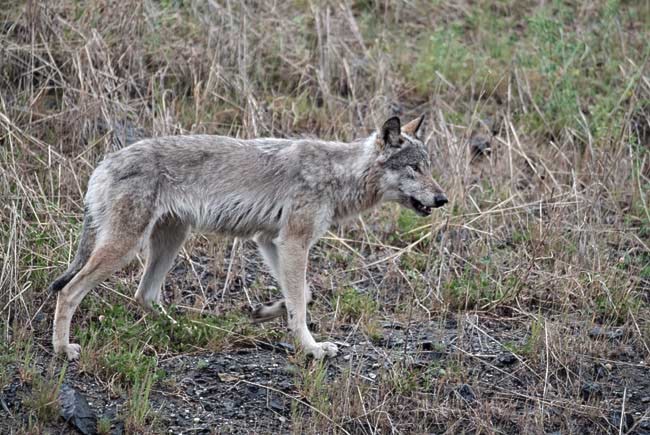The wolf bag-limit for Yukon resident hunters has been increased from three to seven.
It’s necessary to control wolf populations in the absence of trapping, say proponents.
The change was proposed in mid-2007 by both the Teslin and Alsek Renewable Resource Councils, with the goal of seeing “wolf-hunting opportunities enhanced.”
On the official proposal drafted by Environment Yukon it was estimated that given the small number of wolf hunters in the Yukon, the change would enhance the capabilities of the wolf-hunter minority, yet leave the wolf population relatively untouched.
Between 2001 and 2005, only nine out of a total of 74 resident hunters took the maximum bag limit of three wolves, and 24 out of a total of 138 non resident hunters took the maximum bag-limit of two wolves, said the proposal.
Allowing hunters to bag more wolves is essential for Champagne-Aishihik’s caribou and moose recovery program, said a statement by Alsek Renewable Resource Council executive director Susan Desjardins.
“In the past, predators were controlled through trapping,” said the statement.
Now, with fewer trappers, increased bag-limits are required for the few existing wolf hunters, wrote Desjardins.
“Wolves are not hunted by many people; this regulation change offers an opportunity to the few who do harvest them and use their pelts, while helping to keep the wolf population in check,” she wrote.
“The majority of people aren’t into hunting wolves,” said Gord Zealand, executive director of the Yukon Fish and Game Association.
“You would have to be a very good hunter to be able to (take more than three wolves),” he said.
The proposal was initially brought before the Yukon Fish and Wildlife Management Board, which conducted public consultations in communities throughout the territory.
Following a final public meeting in Whitehorse incorporating all the Yukon’s renewable resource councils, an official recommendation was passed by the board to the minister of Environment.
Public consultations were host to some opposition, including the Yukon Conservation Society.
“There’s no information provided to justify increasing the limit from an ecological point of view,” said a comment submitted to the board by the society.
“More information on wolf populations in the current management zones is needed.”
“If the only reason for the changes is that wolves are perceived to reduce game animal populations in some zones, then what we would have liked is studies on the impact of wolf predation to be provided,” said Karen Baltgailis, executive director of the Yukon Conservation Society.
“We didn’t feel there was enough information to justify (the change),” she said.
Environment estimates that 40 per cent of the wolf population dies of natural causes in the Yukon wilderness each year.
The territory’s wolf population stands at 4,500, according to the department.
Graham Van Tighem, executive director of the Yukon Fish and Wildlife Management Board refused to comment on the record.
Members of the Teslin Renewable Resource Council could not be reached for comment.
